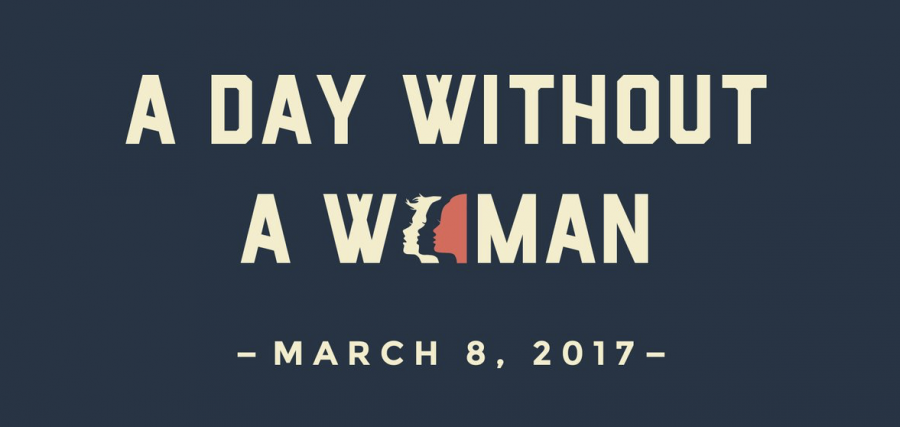Decked out in all of the red clothing we could possibly grasp out of our closets (which, sadly, ended up being socks, a headband and a bright bandana), we lept up in excitement to see what we thought would be the dawn of a new day.
On 1/21, we marched. On 3/8, we strike. Join us in making March 8th a #DayWithoutAWoman https://t.co/iCrlhraapu #IStrikeFor #WhyIResist pic.twitter.com/pTKiepCEzl
— Women’s March (@womensmarch) March 2, 2017
The instructions laid on a simple banner published on Twitter — wear red, do not engage in work and avoid spending money — a simple boycott to show the true impact of women in day to day lives. In our wild-eyed aspirations, we saw a world where, at the very least, so few teachers would end up coming to work that school would be canceled.
But what we got out of the day was much more surprising.
Walking around campus today and going to our classes, we could immediately feel that something was off. Some of the campus felt a bit empty, with pockets of the staff missing. To us, that wasn’t too surprising — we didn’t expect every single female worker to not show up to their job.
Surprisingly, the reddish-pink hue of student’s clothings weren’t to celebrate the occasion. As we walked around during brunch and lunch on a mission to determine why students wore their red tinted clothing, the amount of, “No, it’s not for that women boycott thing” alarmed us. People shied away as we approached them, almost embarrassed that they coincidentally wore the colors of the movement. The intended messages of “solidarity” didn’t permeate throughout the campus — at least, not on purpose.
Yet, our Snapchats were still filled with stories of classmates and friends wearing their red with pride and determination with the International Women’s Day geotag. Our Instagrams and Facebooks were flooded with inspirational quotes and images empowering women with the hashtags #daywithoutawoman and #internationalwomensday.
“You can do anything … Grab them by the pussy. You can do anything.” – President Donald Trump
On Nov. 9, we probably weren’t the only ones in the country whose hearts dimmed in disbelief when they realized that the reality star that once paraded around with the belief that fame and stardom granted one the right to sexually abuse women was now the president of the U.S.
But then, there was hope.
We watched and saw a sea of activists from all over the country, holding hands and explicit signs up in the air. On Jan. 21, thousands of people gathered around the world to protect our rights. According to Vox, the march spread to over 60 countries. The nation watched as families brought their young daughters to watch the world fight for equality. It was a chance to finally, peacefully protest for our rights.
Right after the march, its leaders had a “Where Do We Go From Here?” meeting and organizations such as Planned Parenthood held training sessions for thousands of leaders to take action.
But it’s clear that that was not enough.
The march had a guiding vision and definition of principles — stating that it was to support visions including combating “police brutality”, freedom from sexual violence, LGBTQ rights, immigrant rights and the ratification of the Equal Rights amendment. And we’re, quite obviously, not there yet.
If nothing else, we know we’ve made progress.
This morning, Trump tweeted a message of support to women in their importance to the economy.
On International Women’s Day, join me in honoring the critical role of women here in America & around the world.
— Donald J. Trump (@realDonaldTrump) March 8, 2017
And despite the fact that our own school may not have been aware of it, the world was. In New York, the scene was more bustling — with streets filled with people in protest.
The scene at 59th and 5th right now. #daywithoutawoman #womensstrike pic.twitter.com/5H173sszSN
— Charlotte Alter (@CharlotteAlter) March 8, 2017
So maybe we have some improvement to do — obviously, there’s no stop until we reach equality. But, it’s nice to know we’ve made it somewhere.










